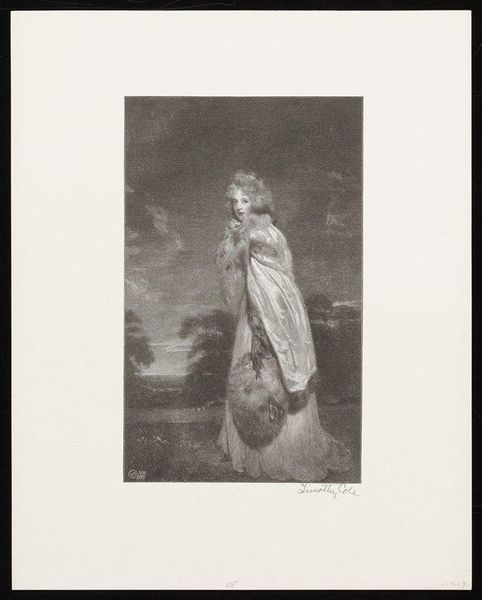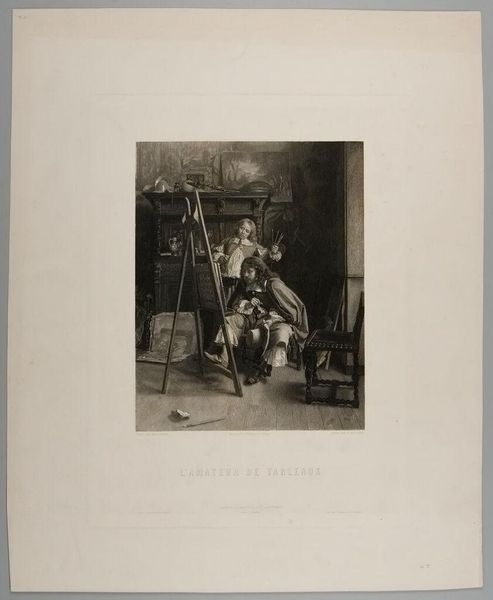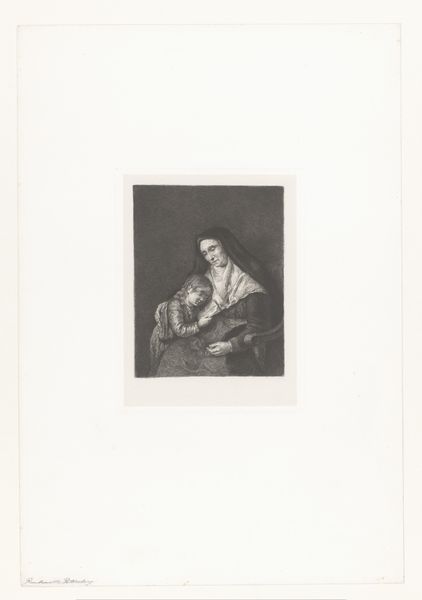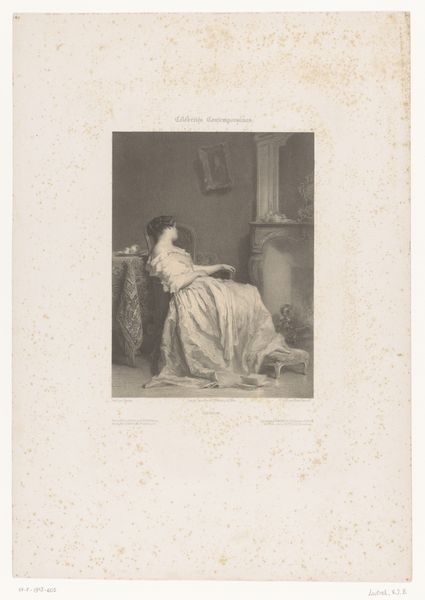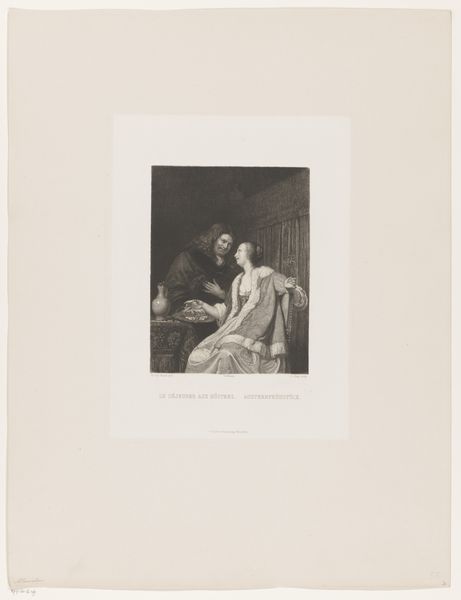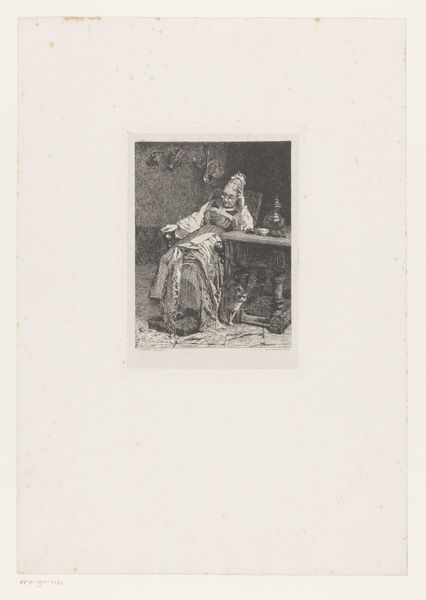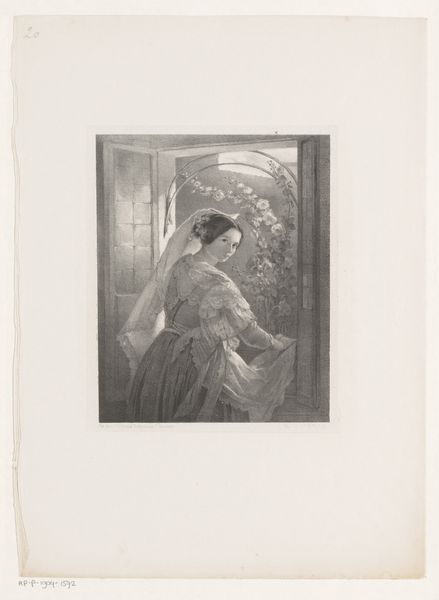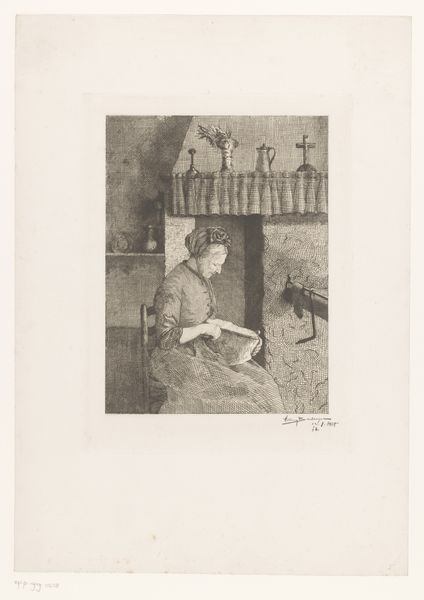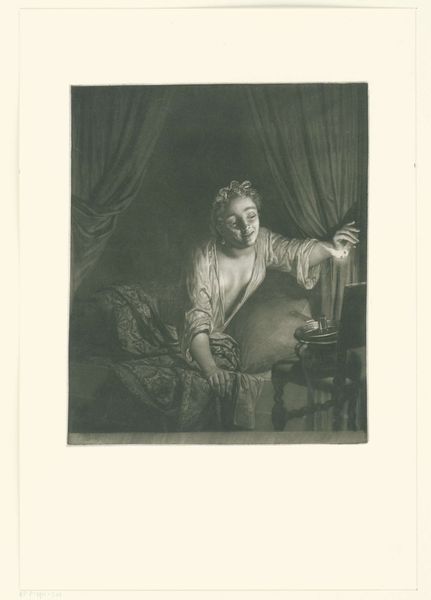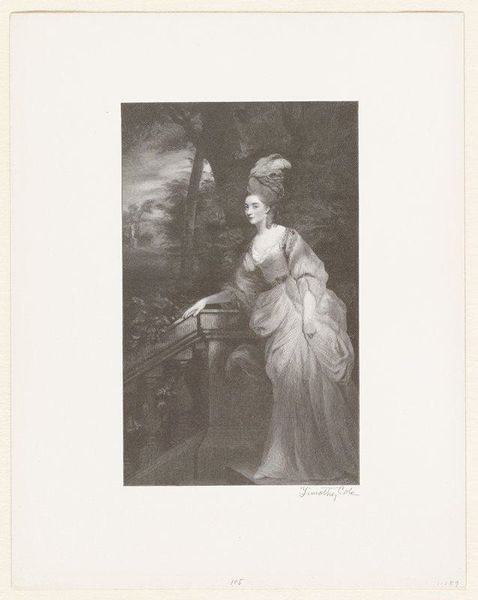
Dimensions: 7 1/4 x 5 3/16 in. (18.42 x 13.18 cm) (image)12 1/8 x 9 9/16 in. (30.8 x 24.29 cm) (sheet)
Copyright: No Copyright - United States
Editor: Here we have Timothy Cole's "The Lute Player" from 1895, a wood engraving. The woman looks so focused, almost lost in the music she's making. How would you interpret this piece? Curator: Well, immediately I see the artist engaging with a familiar subject: the romanticized past, particularly the 18th century, that was very fashionable at this time. Wood engravings like this were widely disseminated in magazines, forming public opinion. To appreciate Cole's work, consider how it fits into a broader cultural appetite for nostalgic imagery. Editor: So, this wasn't necessarily about the music itself, but more about what the scene represented? Curator: Exactly. The lute and the period clothing are symbolic. Think about the rise of industrialization at this time. Images like this offered an escape to what was imagined to be a more genteel, refined past, deliberately crafted to appeal to a particular readership and social aspiration. Editor: That's interesting, the artist sold a version of the past? I never thought about the social purpose that images might serve. Is that why it's in a museum now? Curator: Precisely. Museums played, and continue to play, a significant role in validating these images, reinforcing certain cultural values and shaping our understanding of history through art. It encourages us to reflect on our relationship with the past, and who gets to construct that past. Editor: I see how it's all connected now. Thank you! Curator: You're welcome. Reflecting on art like this offers fresh perspectives on both its history and its present place in society.
Comments
No comments
Be the first to comment and join the conversation on the ultimate creative platform.

